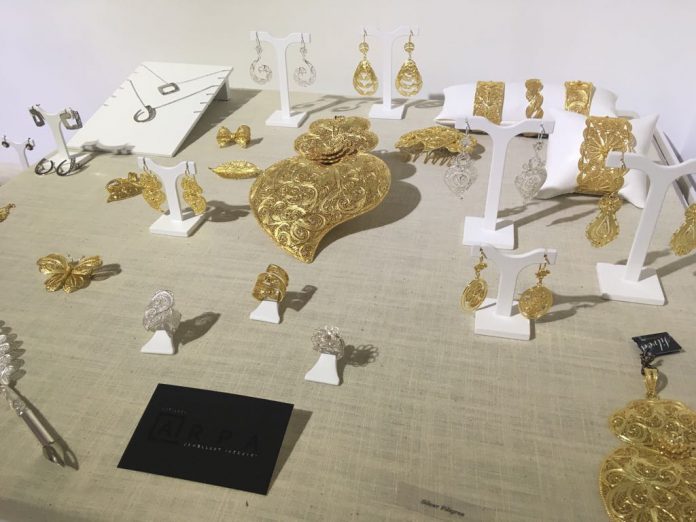Macau (MNA) – A selective group of jeweller makers from Portugal in their first visit to Macau is seeking to enter the local market betting on the quality of their craft and the opportunity to explore the region as Chinese customers get more demanding and tastes more refined.
The jewellery brands invited to present their work at the Portuguese Consul Residence on Thursday and Friday consist mostly of family-run business, applying traditional techniques to contemporary-design pieces.
Several of them already export their products, but very few have tapped the Asian market, with some companies, such as Inês Barbosa (pictured, below) and Liliana Guerreiro, having already worked with Japan.
Some exhibitors have expressed to Macau News Agency (MNA) their interest and expectations toward the Macau market, arguing they have noticed an important jewellery trade in the city, with a few having visited local stores.
Nuno dos Santos, co-founder of Dos Santos fine jewellery, told MNA that he believes there is potential for Portuguese jewellery in Macau given the pace of change and development in the region.
“I think that in five years time, things will change, the tastes will change,” said Mr. dos Santos. “Of course it is a niche, but it is a niche worth developing.”
According to him, Portuguese jewellery brands have another advantage to gain from trading in Macau, as he claims there is not much red tape involved in the export process while other countries such as Brazil impose many customs’ restrictions.

A rare technique
To nearly all of the six brands in display at the former Bela Vista Hotel, the use of a millennial technique called filigree is the main working technique.
Filigree is a technique of ornamental work of fine gold or silver wire employed in jewellery pieces to form a delicate pattern.
According to information provided to MNA during the exhibition, nowadays, the technique is mostly practiced in the north of Portugal, although the number of artisans has been dropping over time.
“A few years ago there used to be some 150 filigree artisans in Portugal. Today, there are only 12,” said a representative of J. Monteiro de Sousa, founded in 1953.
He added that only a few places in the world still work with the technique, in addition to Portugal, Sardinia in Italy, Oaxaca in Mexico, and Colombia.
Cristina Alvim, the Commercial director of Topázio, a jewellery, tableware and decoration company, which also works with the filigree, “exclusively in silver,” said the company expects the brand to expand to Macau, claiming they have a big offer.
Its export markets include the US and other countries in Europe, as well as the Portuguese-speaking countries.
Other brands exhibiting their fine work until tomorrow in a day open to the public is J. Soares and Arpa (pictured, top), both located in the area of Gondomar, the “filigree route,” in the north of Portugal.




















